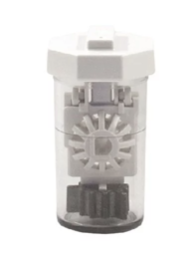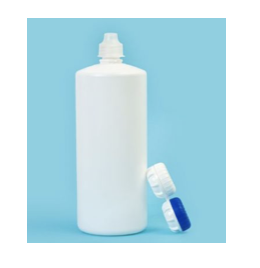To summarize the article from Contact Lens Spectrum below:
- The ecological waste of one-day disposable contact lenses is not significantly different from reusable lenses due to the need for contact lens solution bottles and packaging.
- The plastic in one reusable contact lens case is equivalent to 4 years’ worth of daily lenses.
-
- The plastic in one hydrogen peroxide system case is equivalent to 8 years’ worth of daily lenses.
- Any contact lens that is disposed of in the toilet or down the sink is likely breaking down into microplastics. All lenses should be recycled or disposed of in the trash.

THE ENVIRONMENTAL IMPACT OF CONTACT LENS WASTE
By KAREN K. YEUNG, OD, & ROBERT DAVIS, OD
Contrary to intuition, however, the ecological waste of one-day disposable contact lenses is not that different from that of reusable contact lenses plus contact lens solution. Whereas an annual supply (365 pairs) of one-day disposable contact lenses, including the cartons, blister packs, and foil, produces 1kg of waste per year, reusable contact lenses plus contact lens solution for the year would produce 0.87kg of waste.14 This doesn’t include the shipping boxes and the carbon footprint of shipping materials needed to get the contact lens solution boxes from the distributors to the retail stores.15
With regard to the plastic waste of contact lens solution cases, one multipurpose solution contact lens case and one peroxide system contact lens case are equivalent to four and eight years’ worth of daily disposable lenses, respectively. The average plastic waste of one multipurpose solution or hydrogen peroxide solution bottle is equivalent to more than 2.5 years of daily disposable lenses.16
14. Routhier J, de Freitas M, Hickson-Curran S. Daily disposable versus reusable contact lenses: a close match when it comes to the impact on the environment. Cont Lens Anterior Eye. 2012 Dec 1;35(Suppl 1):e2.
15. Tu J, Pence N. Thinking Green in Contact Lenses. Contact Lens Spectrum. 2018 March;33:19.
16. Routhier J, De Freitas M, Hickson-Curran S. There Are How Many Contact Lenses in What?! Presented at the 2012 American Academy of Optometry meeting. 2012 Oct. 24-27. Phoenix. Available at www.aaopt.org/detail/knowledge-base-article/there-are-how-many-contact-lenses-what . Accessed Feb. 15, 2018.
- TerraCycle recycling has a program with Bausch&Lomb to take any brand of contact lenses and the plastic and foil packaging for recycling. Oswego Optique will collect your saved packaging and send it to be recycled. Cardboard packaging can be put in regular recycling.
WHAT ABOUT CONTACT LENS WASTE?
Currently, there are more than 45 million contact lens wearers in the United States.9 As of 2018, 35% to 46% of all patients wear daily disposable contact lenses.10 Each contact lens weighs 30 micrograms, and the use of contact lens products by end consumers comprises 0.5% of the total environmental waste.11
Rolsky found that among more than 400 contact lens wearers surveyed, 19% discard their contact lenses into the toilet or sink. On an annual basis, this results in an estimated 2.5 billion contact lenses weighing approximately 44,000 pounds entering the wastewater treatment plants in the United States. A pair of contact lenses was found for each two pounds of waste sludge.12 When exposed to microbes such as those found in biological wastewater treatment plants, the bonds holding together the contact lenses break, causing the contact lenses to fragment into smaller pieces and to ultimately form microplastics.13
As the contact lens market shifts more toward daily disposable contact lenses, society may become concerned with the plastic waste. Contrary to intuition, however, the ecological waste of one-day disposable contact lenses is not that different from that of reusable contact lenses plus contact lens solution. Whereas an annual supply (365 pairs) of one-day disposable contact lenses, including the cartons, blister packs, and foil, produces 1kg of waste per year, reusable contact lenses plus contact lens solution for the year would produce 0.87kg of waste.14 This doesn’t include the shipping boxes and the carbon footprint of shipping materials needed to get the contact lens solution boxes from the distributors to the retail stores.15
With regard to the plastic waste of contact lens solution cases, one multipurpose solution contact lens case and one peroxide system contact lens case are equivalent to four and eight years’ worth of daily disposable lenses, respectively. The average plastic waste of one multipurpose solution or hydrogen peroxide solution bottle is equivalent to more than 2.5 years of daily disposable lenses.16


